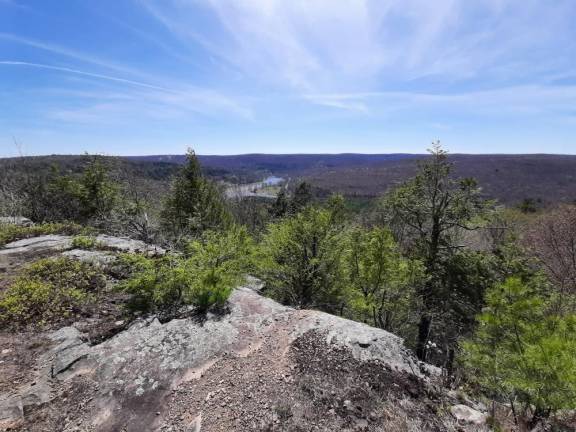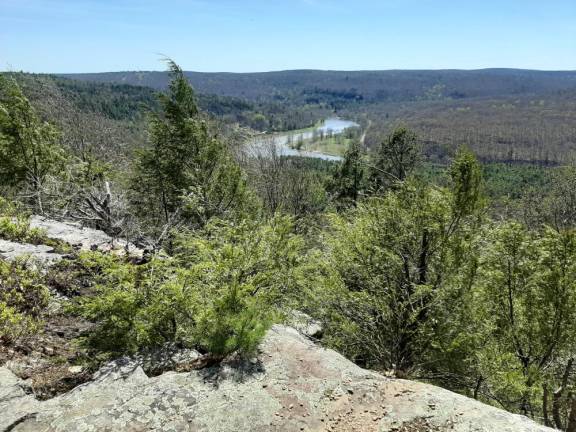


During the height of camping season along the Upper Delaware, the air is filled with wood smoke, the river with rafts, and the police blotters with the sorts of “incidents” that tend to happen when homo sapiens sapiens makes himself at home in the woods. Every summer the constables respond matter-of-factly to mishaps involving steak knives, beer and double-double dares. Also port-o-johns (don’t ask).
You might think that as a “local” – an adjective that has achieved noun status, in the defense against interlopers – I disapprove of these rituals. But the path from urbanite to camper to local is well-trod, including by myself. At our campgrounds you’ll find Dharma bums sleeping, eating and tree-hugging mere inches away from Glampers, who clamp fancy pillows over their ears against the generator noise from the giant RVs, whose occupants barely know anyone else exists. When we live in nature, even briefly, the elemental parts of ourselves are distilled to their purest essence.
Then there are the youth summer camps that are not, to the same extent, laboratories of individualism. You hardly ever see these campers except when their buses pull up at the start of the season and leave at the end. These camps create consensus through uniform meals, uniform bunks, and, well, uniforms.
Camp history runs deep here. Right down the road from me is the former Camp Wel-Met, once one of the biggest sleepaway camps in the USA. It was founded during the Depression by the Metropolitan Jewish Centers Camp Association. Howard Stern and its other alumni continue to celebrate the camp’s crude rusticity at wel-metcamps.com. There’s also Camp Lee Mar – “A Special Camp for Special Kids” – now celebrating its seventieth summer. It’s right on Route 590 in Lackawaxen, and for more than 20 years I’ve driven past it daily, amid autumn leaves and snow cover, waiting for that glorious moment in late June when the pool erupts in spouts of crystal blue water and joyous laughter.
The YMCA still has a camp here, as do the Boy Scouts of America – which brings me to some exciting news that will blow up hiking opportunities locally. The lion’s share of BSA’s Ten Mile River Camp in Sullivan County, N.Y. – and its 60 miles of hiking trails – will be preserved for public use, thanks to a deal made in May between BSA and the Conservation Fund. Listing climate change as its main imperative, the Fund is buying 6,100 acres in the first phase, and another 9,400 in the second. (The rest, about 2,100 acres, will be retained by the Scouts as a summer camp.)
For some perspective on what this means, those 15.5K acres will put Ten Mile River in the same league with some of New York’s biggest parks, like Minnewaska (22K) and Sterling Forest (19K). The public will also have the advantage of 95 years’ worth of trail-building, as each generation of Scouts maintains, improves and adds to the trail system. You can hike the 33-mile Ten Mile River Trail from the Delaware River right up to the Borscht Belt.
Tusten Mountain loop at Ten Mile has become a very popular hike in the 20 years that the National Park Service has managed it. Tom and I hike the loop often, and I’ve written about it here. From the same starting point as the loop, at the beautiful and historic Stone Arch Bridge, we now walk in the opposite direction for a more spectacular view than even Tusten Mountain offers. The Boy Scouts call this south-facing panorama the Picture Window, and it takes in a comely curve of the Upper Delaware.
The hike is only a mile, but tough – steep and slippery, mostly because not enough hiking boots are tamping down the leaf litter. Many of my hard-fought steps gave way, sending me back down into the duff. It takes some time and patience but the payoff is worth it. The overlook is a fabulous place to spend some time, and there are even picnic tables.
If you can tear yourself away from the view, the trail continues along the ridge, past the ruins of an old dining lodge, and toward another view called the Indian Cliffs that we haven’t yet seen.
By the time you read this, the Boy Scouts and all of our other campers will have clambered back on their buses, waving goodbye to the Upper Delaware and summer. How lucky we locals are that we can stay on the trail, ever on the lookout for a better lookout.
SNEAK PEEK
Trailhead: Ten Mile River Access (just south of the Stone Arch Bridge)
Trail: Ten Mile River Trail (red blazes)
Distance to Picture Window: 1 mile
Free trail maps available online at the Ten Mile River Museum. Because they’re Boy Scouts, the page is thoughtful and thorough, with downloadable pdfs in a variety of formats.